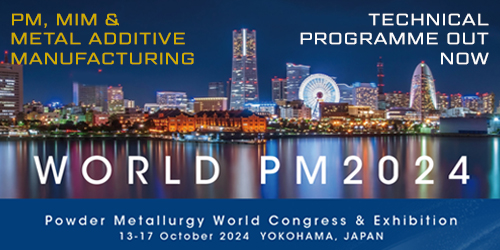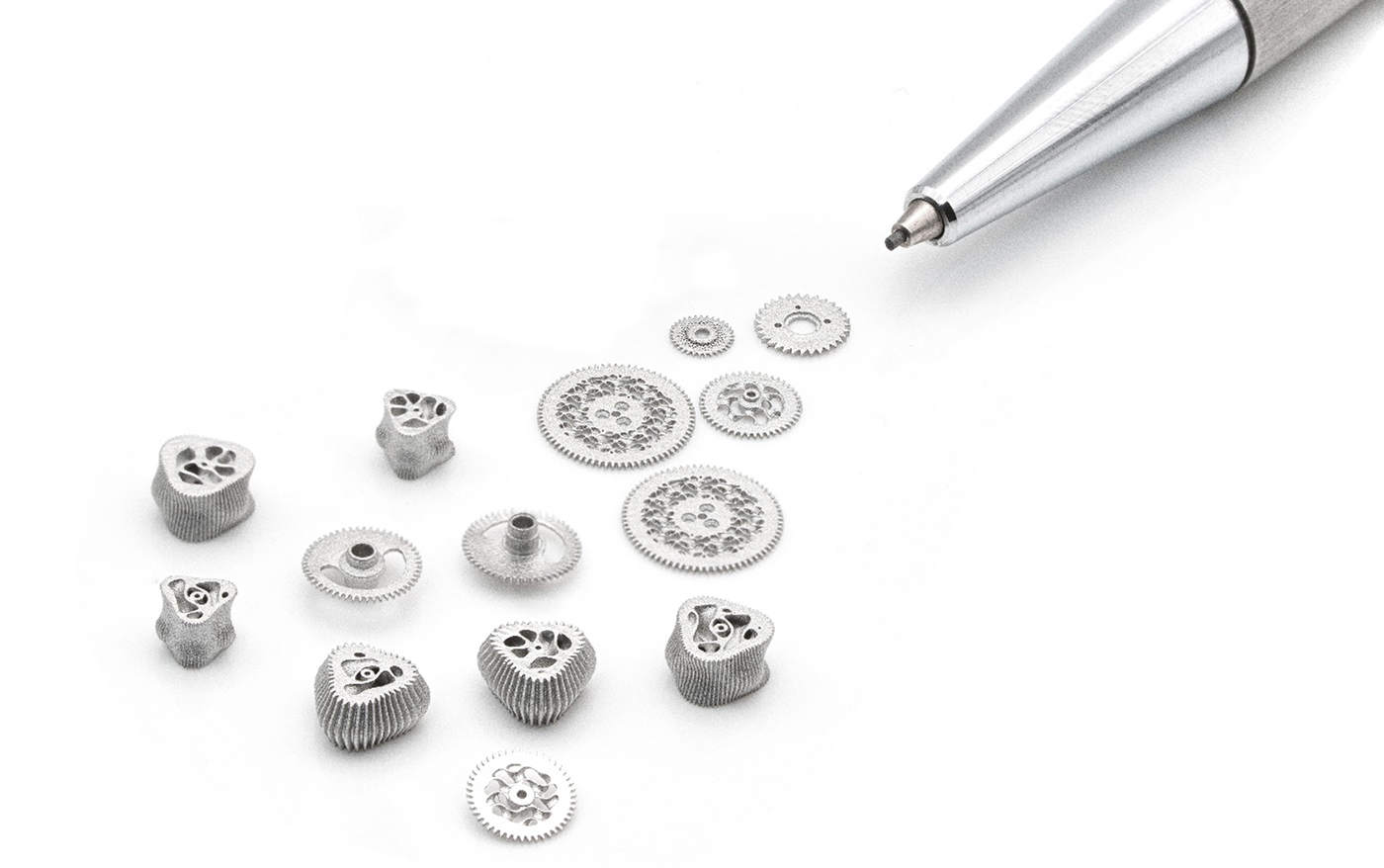Metal Additive Manufacturing micro parts: How Computational Engineering methods can enable new micro robotic applications
Metal Injection Moulding has been the technology of choice for the micro robotics industry for many years, delivering micro-sized precision metal components in medium to high volumes. As the complexity and number of applications increases, there is an opportunity for accelerated product development and more flexible manufacturing through the combination of sinter-based Additive Manufacturing and Computational Engineering. Here, Dr Gerald Mitteramskogler, Josefine Lissner and Dr Stefan Bindl consider how these technologies can be combined for the best possible results. [First published in PIM International Vol. 17 No. 4, Winter 2023 | 10 minute read | View on Issuu | Download PDF]
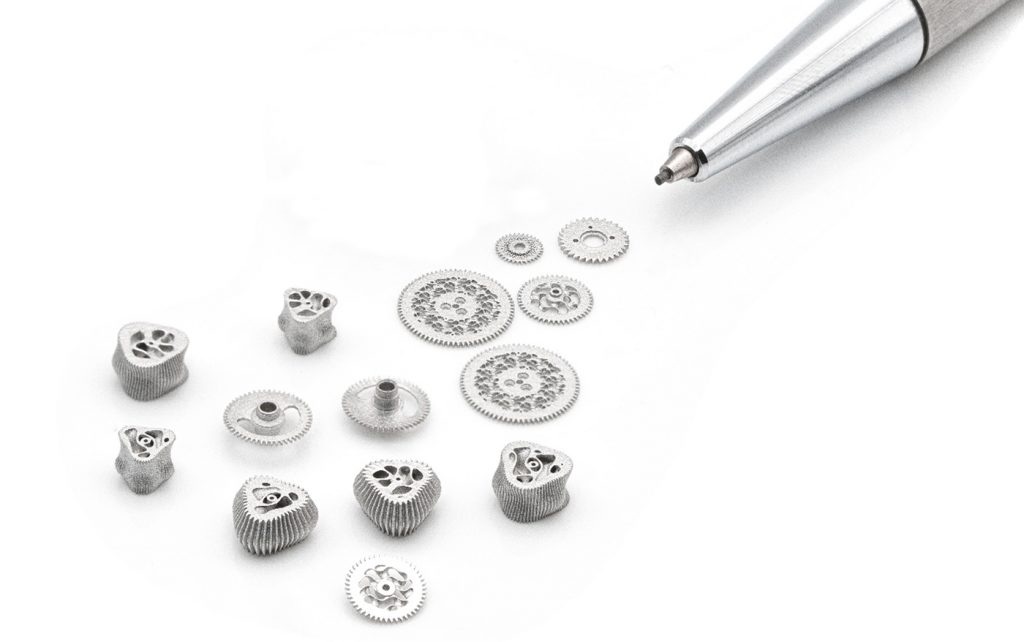
Resources and their intelligent usage is rapidly becoming a key topic for society. As a result, the way we engineer and manufacture products is having to adapt to these needs. One result is the requirement to deliver smaller, more efficient products. The combination of Artificial Intelligence (AI)-supported designs, as well as innovative manufacturing methods, is recognised as one key to unlock significant improvements.
The field of micro robotics in particular is rapidly expanding, finding applications in diverse sectors, but particularly in medicine. The smaller these robots get, the less energy is required to produce and operate them and, very often, miniaturisation is a key feature for the application itself – as is the case with surgical instruments.
A significant challenge faced by micro robotics engineers is the packaging of intricate mechanisms into compact design spaces, including optimising components for mass reduction and power efficiency. Computational Engineering (CE) is one tool with which to address these challenges, with production enabled through the leveraging of Additive Manufacturing technologies.
This article considers the use of Vat Photopolymerisation (VPP) AM for the production of highly precise parts and assemblies. The integration of CE and this unique form of sinter-based AM, paired with the focus on serial manufacturing, offers a comprehensive solution to the design, cost, and capabilities of micro robotics. In addition, fast iterations and efficient prototyping is enabled, accelerating product development.
A collaboration between three companies
LEAP 71 is a software and engineering company based in Dubai, UAE. It is a pioneer in the field of Computational Engineering, in which engineers encode their knowledge into computer algorithms. The resulting Computational Engineering Models (CEMs) can automatically design highly complex machinery based on encoded rules. As it is a software-driven process, variations can be generated in minutes, with the resulting geometries within the constraints of the desired manufacturing process. LEAP 71 collaborates with leading companies in specific industrial sectors to digitise engineering knowledge. As well as medical devices, work is underway on electric motors, heating and cooling, space technology, bioprinting and large-scale structures.
Incus GmbH, based in Vienna, Austria, is a developer of machines for the sinter-based Additive Manufacturing of high-performance metals. Its Lithography-based Metal Manufacturing (LMM) technology, a VPP process, offers an economical method for prototyping and the small- to mid-scale production of components whose quality, mechanical performance and surface finish is a close match to parts produced by Metal Injection Moulding. The AM machine offered by Incus can be integrated into existing MIM production lines or R&D departments, since the same debinding and sintering equipment can be used. LMM is most applicable for the manufacturing of functional prototypes and pre-series manufacturing, as well as for the production of low to medium lot sizes of MIM-sized components.
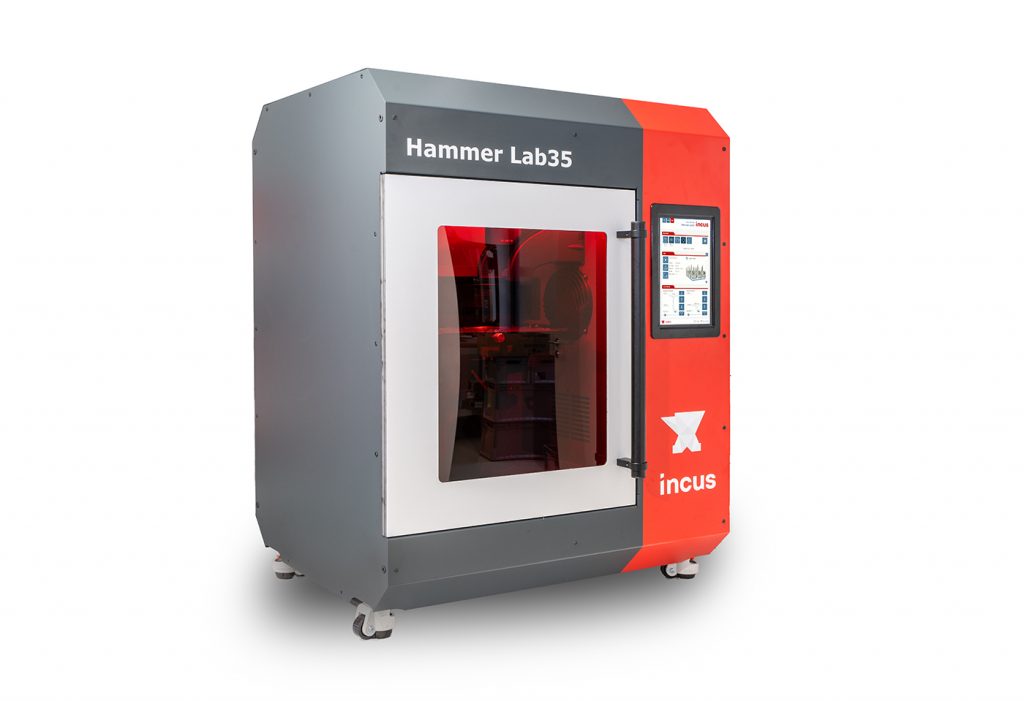
AM Global, based in Starnberg, close to Munich, supports the development of AM serial applications. Recognising that many companies struggle with the implementation of Additive Manufacturing as a production technology, the company identifies and addresses the knowledge gaps that exist when a company transitions from prototyping to series manufacturing. In order to demonstrate a technology’s ability to meet target costs, quality, and lead times, AM Global sets up manufacturing cells and supports a customer as it scales its operations. The focus is always on utilising the best technology for the specific application and delivering an economically viable solution.
The challenge of micro robotics design and manufacturing
The rapid growth of the micro robotics industry, particularly in fields like medicine, presents an array of challenges to engineers. As the sizes of robotics systems decrease, the complexity of packaging intricate mechanisms into confined spaces becomes increasingly demanding. A critical factor in the production of micro robotics is the need for mass reduction due to limited power availability and miniature drives. Moreover, the requirement for functional prototypes and low-quantity production runs for design validation poses a challenge, especially when considering traditional manufacturing methods.
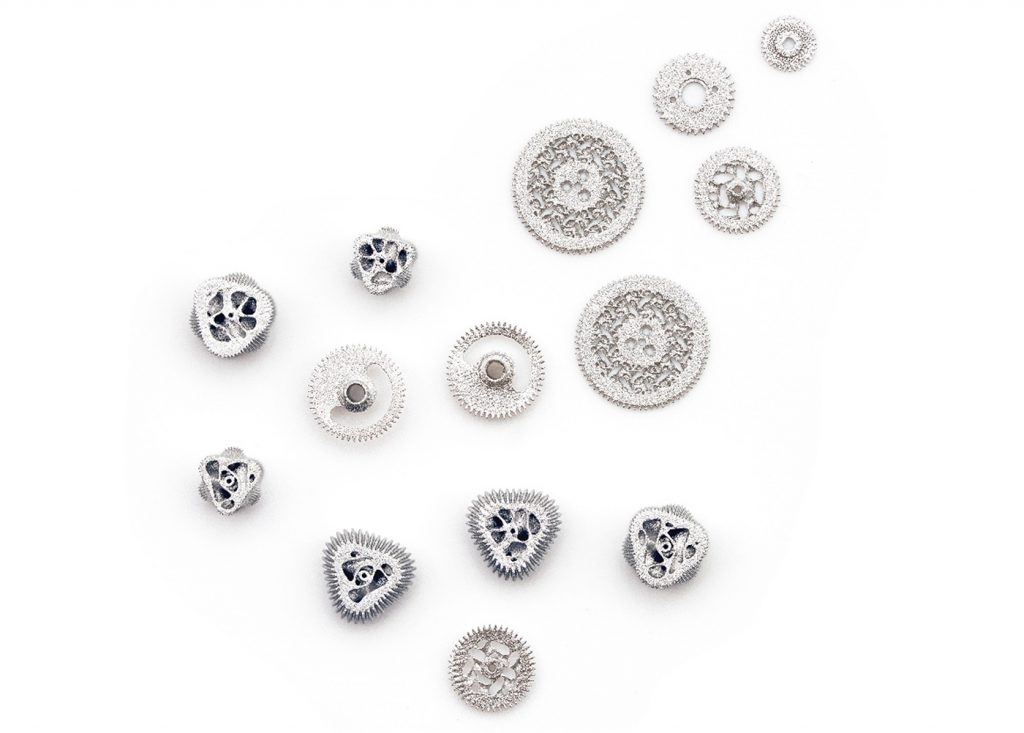
The growing demands in the quantities of high-precision parts in various design derivatives can, therefore, translate to tremendous challenges in the supply chain. Additive Manufacturing has the potential to play a decisive role in this area in particular.
The role of Computational Engineering
Computational Engineering emerges as a powerful tool in micro robotics design due to its capacity to handle complex tasks that commonly-used Computer-Aided Design (CAD) software may struggle with. CE not only aids in conceptualising designs, but also directly incorporates considerations relating to the chosen manufacturing method into the design process.
By dynamically adjusting geometry to accommodate manufacturing constraints, CE streamlines the transition from design to production. This integration minimises errors and enhances the overall efficiency of the development cycle.
LMM: a perfect fit for micro robotics
Lithography-based metal AM offers a viable solution for the production of high precision parts, thus lending itself to the micro-robotics domain. The technology enables the creation of intricate parts with detailed features, and LMM’s precision and smooth surfaces, which are akin to MIM surfaces, ensure that the parts generated are in accordance with the quality standards of the final product.
In addition, cost per part is competitive when it comes to complex geometries and geometry adaptations for various derivatives of the mechanisms. The constraints of the manufacturing technology can easily be implemented into the CE design algorithms.
Instant design feedback loop with CE and LMM
The integration of CE with LMM unlocks a new level of efficiency in micro-robotics design and prototyping. By utilising LMM for rapid functional prototype production, engineers can receive tangible design feedback within a mere twenty-four hours. This accelerated feedback loop facilitates faster iterations, enabling engineers to refine their designs rapidly. Furthermore, the incorporation of 3D scanning technologies enhances the feedback process by providing accurate measurements and assessments of prototype performance.
Scalability and production considerations
While the discussion thus far has centred around functional prototypes, it is crucial to address the scalability and production potential of the proposed solution. Although Metal Injection Moulding might be a viable option for larger quantities and a wide range of designs, Additive Manufacturing technologies, such as LMM, enable new opportunities for alternative product development methods.
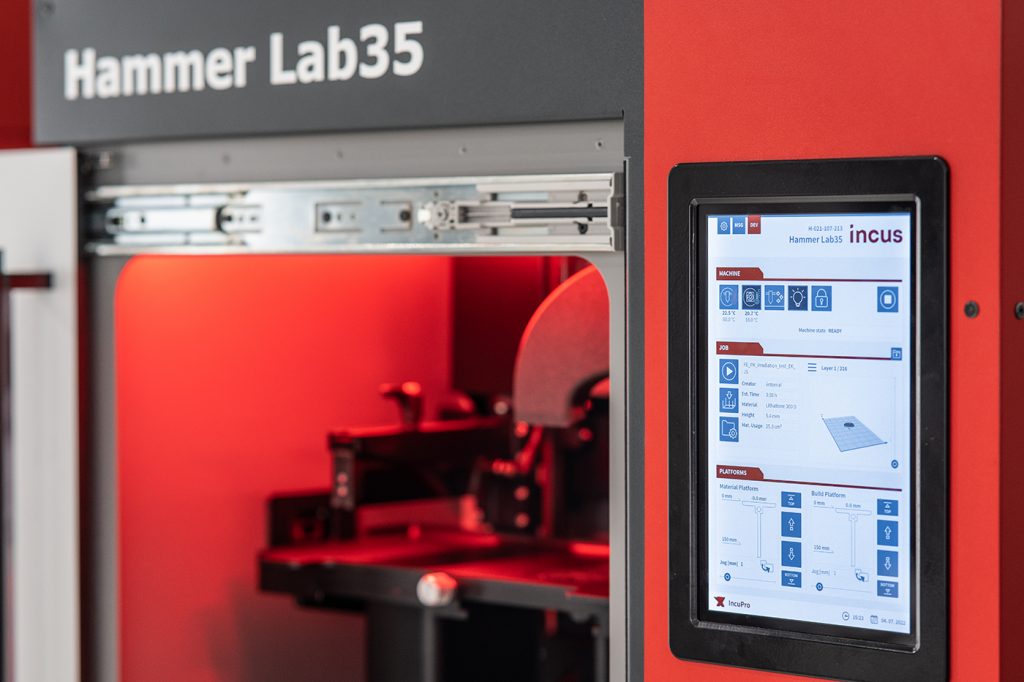
Whilst established production processes such as MIM have already addressed the challenges of quality assurance, scrap rates, and supply chain reliability, these concerns are now also being addressed within Additive Manufacturing. This creates an alternative production route for some existing MIM parts, as well as accelerating the creation of completely new designs, such as those based on Computational Engineering.
Conclusion
In the evolving field of micro-robotics, the challenges of compact design, mass reduction, and efficient prototyping demand innovative solutions. Computational Engineering emerges as a superior approach for tackling these complexities by seamlessly integrating manufacturing considerations into the design process.
When combined with metal Additive Manufacturing, CE unlocks a powerful feedback loop, enabling engineers to rapidly iterate and refine their designs. This synergy holds the potential to revolutionise micro-robotics development, paving the way for more efficient, precise, and impactful micro-robotic systems.
Furthermore, the advancements in manufacturing technologies provide high detail resolution as well as excellent surfaces. LMM technology, in particular, answers both concerns and is a preferred method to produce tiny parts as utilised in the field of micro-robotics.
In order to scale the production capabilities, companies provide business models to de-risk the setting up of AM production. For many, the chasm between interest in the available technologies and the ability to implement them is the lack of knowledge and the high cost to develop the application and a coherent production chain. Co-development initiatives, as well as the setting-up and transfer of production plants (when technically and economically viable), decreases this hurdle dramatically.
Authors
Dr Gerald Mitteramskogler
CEO, Incus GmbH
www.incus3d.com
Josefine Lissner
CEO and Co-Founder of LEAP 71
www.leap71.com
Dr Stefan Bindl
Director Engineering
AM Global Holding GmbH
www.amg-h.com




